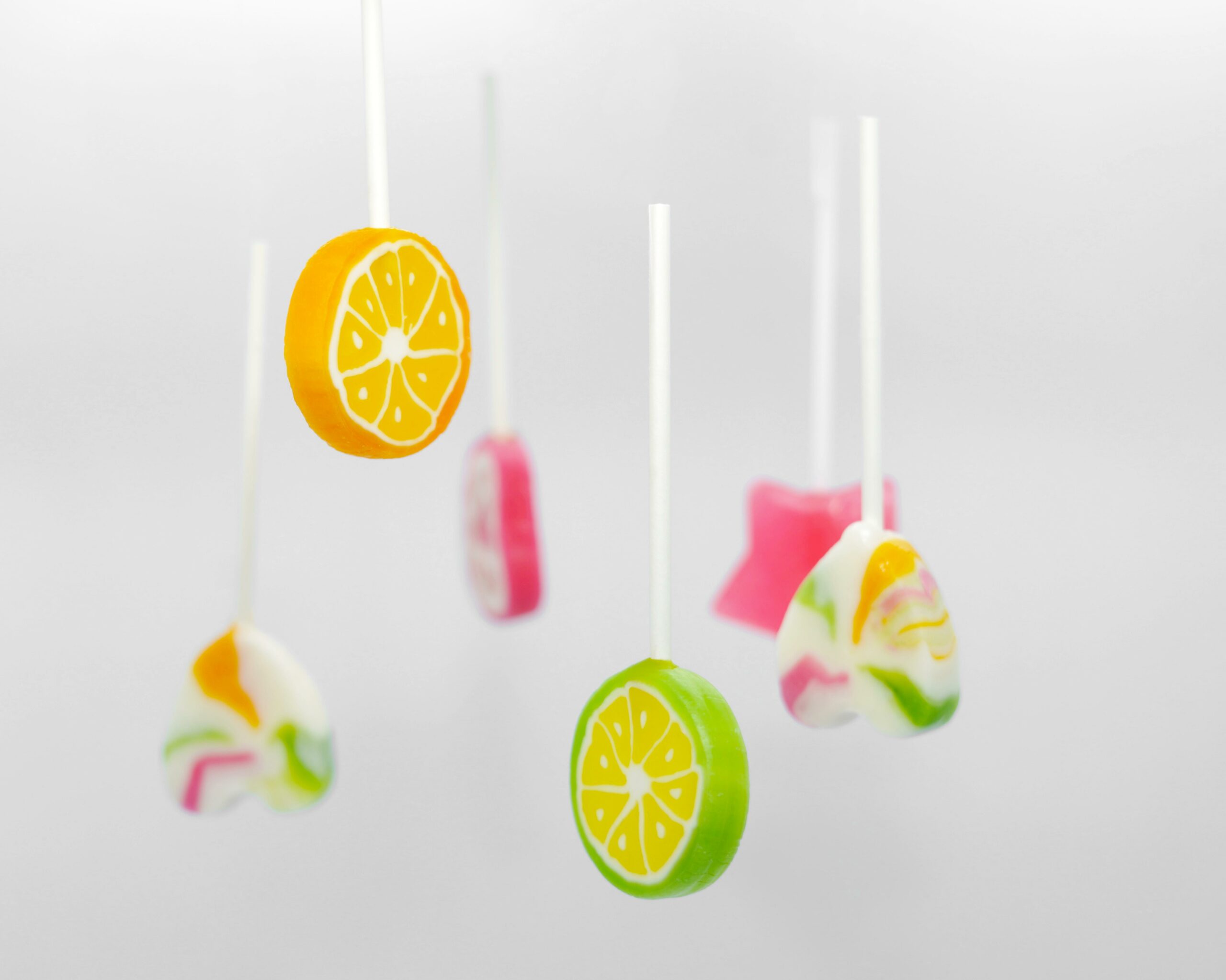Have you ever wondered about the delightful creation that is a lollipop? This saccharine delight, with its mesmerizing swirls of colors and flavors, holds a rich history that spans across centuries and civilizations. In this article, we embark on a journey through time, delving into the captivating origins of lollipops. Brace yourself for a delectable exploration that uncovers the ancient roots of this beloved confectionery, unveiling the fascinating intersection of culture and candy-making. Get ready to indulge your taste buds and your curiosity as we unveil the sweet storyline behind the creation of lollipops.

Origin of Lollipops
When it comes to sweet treats, few can rival the allure of lollipops. These beloved confections have captivated our taste buds for generations, but have you ever wondered where they came from? Join me on a journey through time as we unravel the ancient origins of lollipops and discover the fascinating intersection of culture and confectionery.
Ancient Beginnings: A Sticky Delight
The story of lollipops begins in the ancient civilizations of Africa and Asia. It’s here that we find the earliest traces of these sugary delights. In these ancient cultures, fruit and nut confections were often candied in honey to preserve them and enhance their sweetness. Can you imagine the joy of indulging in these sticky treats?
Making It Easier to Savor
While the ancient African and Asian confections were undoubtedly delicious, they lacked the iconic stick that we associate with lollipops today. This clever addition came much later. It was George Smith of New Haven, Connecticut, who claimed to be the first to invent the modern-style lollipop in 1908. Smith, wanting to make it easier to eat the candy, had the brilliant idea of adding a stick. This simple innovation transformed the way we enjoy lollipops today.
“George Smith’s addition of a stick revolutionized the candy-eating experience, making lollipops a more convenient and enjoyable treat.”
The Birth of Automation: Streamlining Lollipop Production
As the popularity of lollipops grew, so did the need for efficient manufacturing methods. It was the Racine Confectioners Machine Company in Wisconsin that rose to the challenge. In 1908, they established the first automated lollipop manufacturing process, forever changing the way these delightful candies were produced.
“The Racine Confectioners Machine Company played a pivotal role in the mass production of lollipops, ensuring their availability to a wider audience.”
A Sweet Name, A Sweet Victory
Now, let’s delve into the intriguing story behind the name of these delectable treats. George Smith, the inventor of the modern lollipop, chose to name the candy after his favorite racehorse, Lolly Pop. In 1931, Smith not only patented the candy but also patented the name itself. This double victory secured the place of lollipops in the annals of sweet history.
“The name ‘lollipop’ carries with it a legacy of both creativity and nostalgia, forever preserving the memory of George Smith’s beloved racehorse.”
Romantic Origins or Linguistic Evolution?
The etymology of the word “lollipop” remains a subject of debate. Some believe that it may have derived from the term “lolly” (meaning tongue) and “pop” (meaning slap), evoking the act of slurping on the candy. Another theory suggests a link to Romany traditions, where candy apples on sticks were sold, and the term “lollipop” may have originated from the Romany word for red, “loli phaba.”
“Whether it’s linguistics or a touch of romance, the origin of the word ‘lollipop’ adds to the mystique of these delightful candies.”
Crafted with Care: The Art of Lollipop Making
While sugar is the main ingredient in lollipops, the process of creating these sweet treats is anything but simple. Crafted through complex techniques, lollipops undergo a careful manufacturing process to achieve their signature glassy amorphous state. It involves precise temperature control, rapid cooling, and meticulous attention to detail.
Endless Variety: A Pop of Flavors and Colors
Lollipops continue to capture our imaginations with their vast array of flavors, shapes, and colors. From fruity explosions to tantalizing twists, there’s a lollipop to suit every taste and preference. Whether you fancy classic cherry or crave the tang of sour apple, these confections offer a world of flavor possibilities.
“The rich diversity of lollipop flavors and colors ensures that there’s always something to delight every palate.”
A Universal Sweetness
Lollipops have truly transcended cultural boundaries, becoming a beloved treat enjoyed by people worldwide. From children’s birthday parties to carnival stalls, these sugary delights bring joy to people of all ages. Their universal appeal is a testament to their sweet taste, enticing flavors, and playful appearance.
“Lollipops have become the quintessential symbol of sweetness, transcending borders and capturing the hearts of candy enthusiasts around the globe.”
As we close the chapter on the origin of lollipops, we can’t help but appreciate the intricate web of history, culture, and innovation that brought these delightful treats into our lives. So, the next time you savor a lollipop, take a moment to savor the stories embedded within its sweet swirls.
Lollipops are beloved treats that have been enjoyed for generations, but have you ever wondered when they were first invented? If you’re curious about the origins of this sugary delight, you’ll be delighted to learn that lollipops have a fascinating history. Click here to discover when lollipops were invented and dive into a world of sweet nostalgia and intriguing facts. Let your taste buds travel through time as you uncover the story behind this timeless confection. Feed your curiosity and satisfy your sweet tooth by following this captivating link: When Were Lollipops Invented.
FAQ
Q: Who invented the modern style lollipop?
A: George Smith of New Haven, Connecticut claimed to be the first to invent the modern style lollipop in 1908.
Q: Why did George Smith add a stick to lollipops?
A: George Smith added a stick to lollipops to make it easier to eat the candy.
Q: What were the initial lollipops like?
A: Initially, lollipops were a soft candy, not hard.
Q: Which company established the first automated lollipop manufacturing?
A: The Racine Confectioners Machine Company in Wisconsin is said to have established the first automated lollipop manufacturing in 1908.
Q: How did lollipops get their name?
A: George Smith named the candy after his favorite racehorse, Lolly Pop, and patented the candy and the name in 1931.
“`json
“`
















